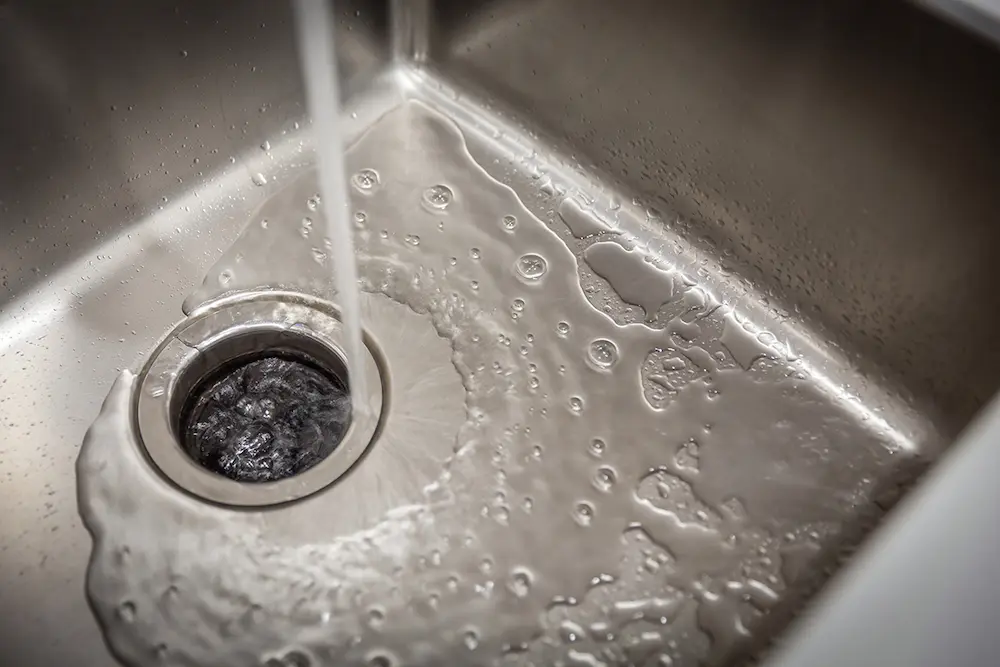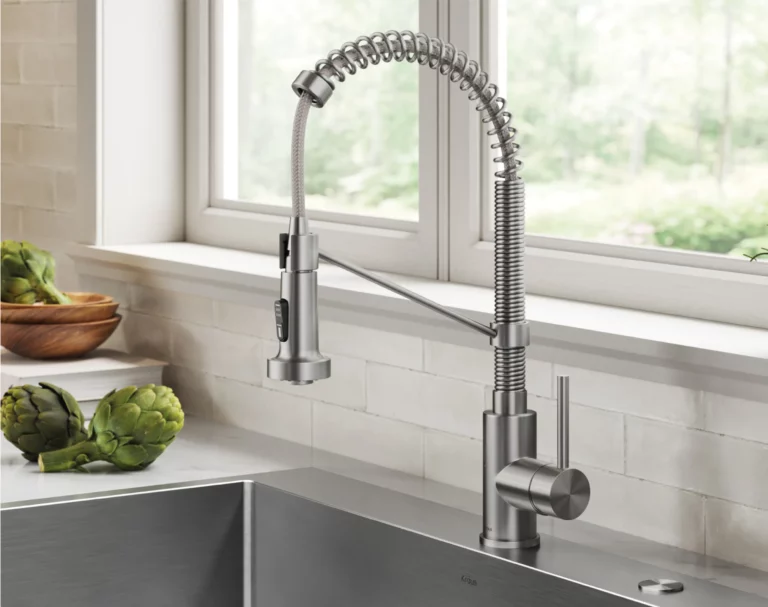Kitchen Sink Drain Size: What You Need to Know
When it comes to kitchen sink drain size, it’s important to have the right measurements to ensure proper functionality. The size of the drain can affect the flow of water and the disposal of food waste, so it’s crucial to get it right. In this article, I will discuss the standard kitchen sink drain size and how to measure it.
The standard kitchen sink drain hole size is typically 3.5 inches in diameter, although some sinks may require a 4-inch hole. It’s important to check the manufacturer’s instructions for the specific sink or drain assembly kit to determine the appropriate size. Additionally, building codes may require a minimum diameter for the drain pipe, which is typically 1.5 inches for most residential kitchen sinks. However, some plumbing systems may utilize a 2-inch pipe, especially for larger setups such as kitchen islands. In the next section, I will discuss how to measure the size of your kitchen sink drain to ensure proper installation.
Understanding Kitchen Sink Drain Sizes
As a homeowner, understanding the size of your kitchen sink drain is important when it comes to replacing or repairing your sink. In this section, I will explain the standard sizes and variations in sizes for kitchen sink drains.
Standard Sizes
According to Sink Formula, the standard kitchen sink drain hole size is 3-1/2 inches in diameter, with some sinks requiring a 4-inch hole. This information should be included in the instruction manual that comes with the sink or drain assembly kit. If you are unsure about the size of your kitchen sink drain, try contacting the manufacturer for assistance.
Signature Hardware states that a standard kitchen drain is 3 1/2 inches in diameter. This measurement is taken across the center of the drain, from one side to another. The drain strainer, which is the bowl-shaped piece inside the drain mouth, should match this dimension.
Variations in Sizes
When selecting a kitchen sink drain size, it is important to consider the size of the sink bowl and the type of material used. For example, a stainless steel sink typically requires a larger drain size of 4 inches, while a porcelain sink may need a 2.5-inch drain size.
In addition, some sink manufacturers may have their own unique drain sizes. It is important to check with the manufacturer or review the instruction manual to ensure that you are purchasing the correct size drain for your specific sink.
It is also important to note that the pipe size used for a kitchen sink drain is typically 1.5 inches in diameter, which is standard for most residential kitchen sinks. This size is designed to handle the usual amount of water and food waste.
In summary, understanding the size of your kitchen sink drain is crucial when it comes to replacing or repairing your sink. The standard size for kitchen sink drains is 3-1/2 inches in diameter, with some sinks requiring a 4-inch hole. However, it is important to consider the size of the sink bowl and the type of material used, as well as any unique drain sizes from the manufacturer.
Importance of Correct Drain Size
As someone who has installed and repaired many kitchen sinks, I cannot stress enough the importance of selecting the correct drain size. A properly sized drain ensures efficient drainage and helps avoid blockages, which can lead to costly repairs and even health hazards.
Efficient Drainage
The drain size determines how quickly water and food particles can flow out of the sink. If the drain is too small, it can cause water to pool in the sink, which can lead to unpleasant odors and bacterial growth. On the other hand, if the drain is too large, it can cause water to drain too quickly, which can lead to splashing and even damage to the sink.
To ensure efficient drainage, it is important to choose a drain that matches the size of the sink opening. According to Sink Formula, the standard kitchen sink drain hole size is 3-1/2 inches in diameter, although some sinks may require a 4-inch hole. It is important to check the manufacturer’s instructions to determine the correct size for your sink.
Avoiding Blockages
One of the most common problems with kitchen sinks is blockages. Blockages can be caused by a variety of factors, including food particles, grease, and even foreign objects. A properly sized drain can help prevent blockages by allowing water and food particles to flow out of the sink quickly and efficiently.
To further prevent blockages, it is important to use a drain strainer or stopper to catch food particles and other debris before they enter the drain. Regular cleaning of the sink and drain can also help prevent blockages.
In conclusion, selecting the correct drain size is crucial for efficient drainage and avoiding blockages. By following the manufacturer’s instructions and using a drain strainer, you can ensure that your kitchen sink stays clean and functional for years to come.
Choosing the Right Drain Size
When it comes to choosing the right drain size for your kitchen sink, there are a few factors to consider. In this section, I will cover two important sub-sections: Assessing Your Needs and Considering Sink and Countertop Dimensions.
Assessing Your Needs
Before you select a drain size, you need to assess your needs. Ask yourself: How often do I cook? How many people live in my household? Do I have a dishwasher? These are important questions to consider because they will help you determine the amount of food waste you generate on a daily basis.
If you’re someone who cooks regularly and generates a lot of food waste, you may want to consider a larger drain size. A larger drain will allow for easier disposal of food waste and prevent clogs. On the other hand, if you’re someone who doesn’t cook often and generates less food waste, a smaller drain size may be sufficient.
Considering Sink and Countertop Dimensions
Another important factor to consider when choosing the right drain size is the dimensions of your sink and countertop. The size of your sink and countertop will determine the maximum size of the drain that you can install.
For example, if you have a small sink or a narrow countertop, you may need to choose a smaller drain size. On the other hand, if you have a large sink or a wide countertop, you may be able to install a larger drain size.
It’s important to note that the standard kitchen sink drain hole size is 3-1/2 inches in diameter, with some sinks having a 4-inch hole. However, it’s always a good idea to consult the manufacturer’s instructions to determine the recommended drain size for your specific sink.
In summary, when choosing the right drain size for your kitchen sink, it’s important to assess your needs and consider the dimensions of your sink and countertop. By taking these factors into account, you can ensure that you choose a drain size that will meet your needs and prevent clogs.
Installation of Kitchen Sink Drain
When it comes to installing a kitchen sink drain, you have two options: DIY installation or professional installation.
DIY Installation
If you’re handy with tools and have some plumbing experience, you may be able to install a kitchen sink drain yourself. Here are the basic steps:
- Choose a drain assembly kit that fits your sink. The kit will contain a basket strainer, locking nut, rubber washer, friction ring, and a brass tailpiece to connect the drain to the drainpipes.
- Remove the old drain assembly and clean the sink opening thoroughly.
- Apply plumber’s putty around the underside of the basket strainer and press it into the sink opening.
- Install the locking nut, rubber washer, and friction ring onto the basket strainer from underneath the sink.
- Connect the brass tailpiece to the basket strainer and tighten with pliers.
- Connect the P-trap to the tailpiece and the drainpipe and tighten with pliers.
- Turn on the water and check for leaks.
Professional Installation
If you’re not comfortable with plumbing or don’t have the necessary tools, it’s best to hire a professional to install your kitchen sink drain. A licensed plumber will be able to ensure that the drain is installed correctly and will stand up to regular use.
When hiring a plumber, be sure to ask for references and check their credentials. You should also get a written estimate of the cost of the installation before work begins.
Overall, whether you choose to install your kitchen sink drain yourself or hire a professional, it’s important to ensure that the drain is installed correctly and functions properly. A well-installed drain will prevent leaks and keep your sink working properly for years to come.
Common Issues and Solutions
Dealing with Leaks
One of the most common issues with kitchen sink drains is leaks. Leaks can occur due to a variety of reasons such as loose connections, worn-out gaskets, and damaged pipes. If you notice a leak, it is important to address it immediately to prevent further damage to your sink and surrounding areas.
To fix a leak, start by identifying the source of the problem. Check all the connections and make sure they are tightened properly. If the leak persists, you may need to replace the gasket or the damaged pipe. In some cases, you may need to call a professional plumber to fix the issue.
Unclogging Drains
Another common issue with kitchen sink drains is clogging. Clogs can be caused by a variety of things such as food particles, grease, and soap scum. If you notice that your sink is draining slowly or not at all, it is likely that you have a clog.
To unclog a drain, start by using a plunger. Place the plunger over the drain and push down and up several times. If this does not work, you may need to use a drain snake or a barbed drain cleaning tool. You can also try pouring boiling water down the drain to dissolve the clog.
If none of these methods work, you may need to use a chemical drain cleaner. However, be cautious when using these products as they can be harmful to your pipes and your health. Follow the manufacturer’s instructions carefully and wear protective gear such as gloves and goggles.
In conclusion, leaks and clogs are common issues with kitchen sink drains. However, with proper maintenance and prompt attention, these issues can be easily resolved.
Conclusion
In conclusion, determining the correct kitchen sink drain size is crucial for proper drainage and avoiding clogs. The standard kitchen sink drain hole size is 3-1/2 inches in diameter, but it may be 4 inches in some cases. It is important to check the manufacturer’s instructions to confirm the correct size.
When selecting a drain, consider the size of the sink bowl and the type of material used. For example, a stainless steel sink typically requires a larger drain size of 4 inches, while a porcelain sink may need a 2.5-inch drain size. Additionally, the size and number of faucets in the sink should also be considered.
It is also important to ensure that the drain height is appropriate for the sink. The standard height of a kitchen sink drain system from the floor is 20 to 24 inches. However, it is best to measure the height of the sink and the distance from the floor to ensure the correct size.
Overall, taking the time to measure and select the correct kitchen sink drain size will ensure proper functioning and avoid costly repairs in the future.




